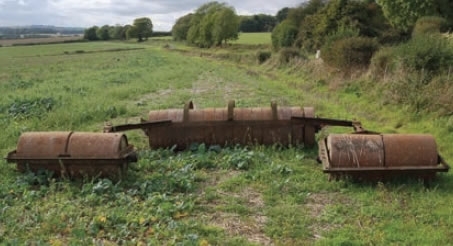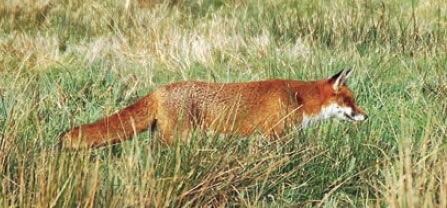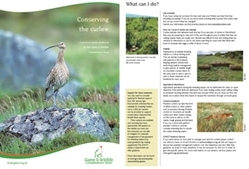Get involved
If you have curlew, let us know! Do they nest near you? Where are they? Are they breeding successfully? If not, do you know what is limiting their success? Did curlew nest, but not any more? What has changed?
Submit your information here.
How do I know if curlew are nesting?
Curlew typically nest between April and July. If you see pairs of curlew in March/April, they may be preparing to nest, and in May and throughout June, it is likely that they are nesting nearby. Nests are usually very discreet and difficult to find, and nesting birds are sensitive to disturbance so we do not advise searching for exact nest sites. Birds take turns to incubate their eggs, in shifts of about 3 hours.

Habitat
Maintenance of suitable breeding habitat is a critical starting point. This can include: maintaining wet pastures in the lowlands, keeping pastures unimproved, performing heather management to give patches of suitable length on moorland. Curlew return to the same area to nest in year on year, so these measures can be beneficial for many years.
Agricultural disturbance
Agricultural operations during the breeding season can be destructive for nests, or cause desertion if the adult birds are distressed. If you have nesting curlew, avoid cutting, rolling or excessive stocking between mid April and mid July. When you do mow, cut from the inside out, to allow chicks the chance to escape the machinery through un-mown grass.

Control predators
Predator control can take the form of lethal control, or other options such as exclusion fencing. Predator control on moorland can benefit curlew and other waders nesting on the moor, as well as on the nearby rough grazing and farmland. If you run a shoot and perform predator control in summer, consider extending this to include the curlew breeding season
GWCT Advisory Service
If you need advice on how best to manage your land for curlew, please contact our advisory team on 01425 651013 or advisory@gwct.org.uk. We are happy to discuss the available management options over the telephone and also offer free guidance via email. In many situations, it may be necessary to visit you in order to give site-specific advice. For more information on our advisory service, please visit
www.gwct.org.uk/advisory.
Conserving the curlew - get your free 8-page guide
Simply enter your email address below to download your essential free guide.
 What's inside your FREE guide
What's inside your FREE guide
✓ Introduction - a species in decline
✓ Pressures on breeding
✓ High levels of nest and chick predation
✓ Agricultural nest destruction
✓ Breeding curlew facts
✓ What can I do?
✓ Summary & key points
Download now >